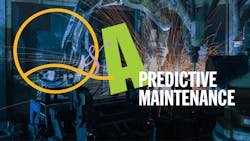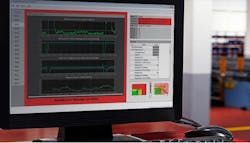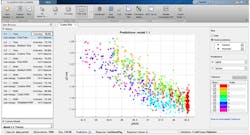How Can Companies Use Predictive Maintenance?
Predictive maintenance is a valuable tool for any company that uses industrial equipment. However, skepticism still exists over whether it really delivers measurable benefits.
To clear up that skepticism, Machine Design recently spoke with Philipp Wallner, an industry manager at MathWorks. He answers some common questions companies have when assessing the return on investment of predictive maintenance, as well as addressing the misconceptions and benefits associated with it.
Machine Design: Can you describe some of the misconceptions companies have regarding predictive maintenance?
Wallner: Predictive maintenance has often been mistakenly labeled as a “black box” solution, where operational data from equipment is used to somehow predict machinery’s remaining useful life. However, this assumption overlooks the importance of domain knowledge, which is knowledge unique to a specific environment. It plays a pivotal role in developing programs that detect and predict failures.
Companies and manufacturers that use predictive maintenance on production lines enjoy many benefits. And companies that do not use it can be at a competitive disadvantage. But predictive maintenance’s benefits are within reach of any company willing to invest the resources to combine machine learning and domain expertise.
MD: How can companies best connect machine learning and domain expertise, and bridge the data science and engineering communities?
Wallner: Now is a great time for companies to foster collaboration across the data science and engineering communities. Data scientists are traditionally involved in predictive maintenance based on their background in mathematics. Yet, they often lack the domain knowledge in the engineering community.
There are tools to simplify this process and build collaboration, such as software simulation programs. These programs let users generate powerful predictive maintenance algorithms while ensuring those algorithms need less field data to be trained. The programs can also give a helping hand to users unfamiliar with predictive maintenance, letting them experiment with various techniques to collect and train data using apps. For example, packaging and paper goods manufacturer Mondi uses such tools to develop health monitoring and predictive maintenance applications that identify potential equipment issues. And it only took a few months to get it up and running and helping to reduce downtime and maintenance costs.
MD: How important is failure data predictive maintenance applications?
Wallner: Failure data needs to be collected for companies to best train predictive maintenance algorithms; however, this kind of data is difficult to access as equipment doesn’t frequently break down, and it’s costly to make equipment intentionally fail only to collect failure data. To address this issue, software tools help generate failure data by using simulation models to determine how physical equipment might operate in the field under different testing scenarios.
Software simulation tools simplify the process of generating failure data, letting them strengthen predictive maintenance algorithms without needing so much actual field data for “proper” training. These tools also let operators use various methods of preprocessing data and training predictive models. Baker Hughes, for instance, used software tools to develop pump health monitoring software that uses data analytics and deep learning for predictive maintenance. As a result, the company reduced equipment downtime costs by as much as 40% and cut the need for extra trucks onsite.
MD: What trends in predictive maintenance do you foresee for 2021 and beyond?
Wallner: Over the next few years, companies should see the rapidly increasing calculation power in edge computers and industrial controllers open the doors to a new dimension of software on production systems. Predictive maintenance will be both onsite and close to equipment and use data across several factories and equipment from different vendors. Also, these AI-based algorithms will run on real-time and non-real-time platforms and systems, depending on the requirements.
Additionally, there will be more cloud platforms, which will be the most powerful users of predictive maintenance and feed data from equipment around the world into the platform. Despite some remaining skepticism, companies should prepare for cloud-based predictive maintenance, as the cloud lets manufacturers collect data from multiple areas and more efficiently train predictive maintenance algorithms.


